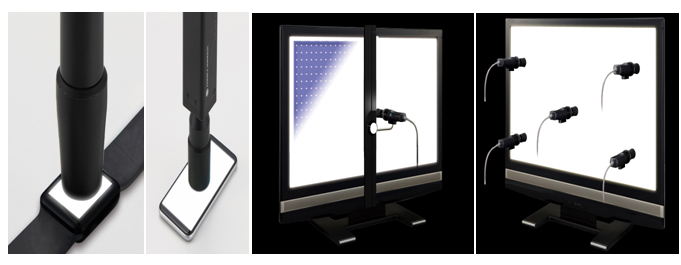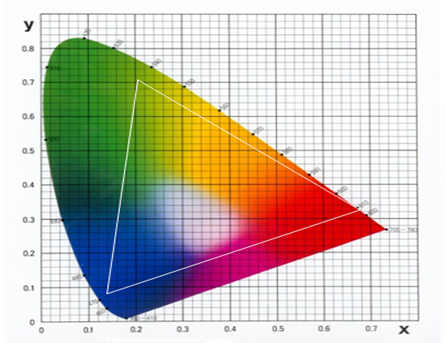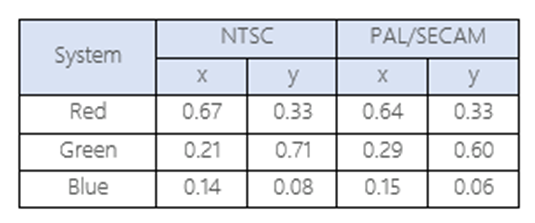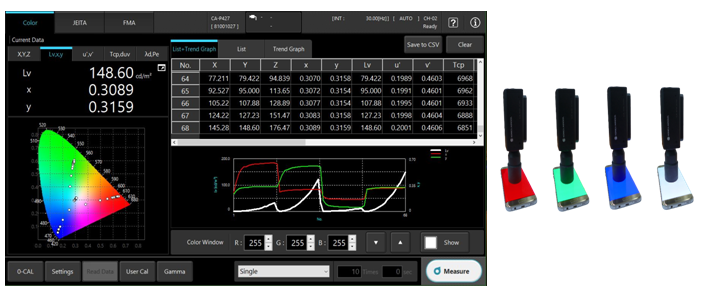Basic Display Metrology (Part 1)
Electronic display devices go through a series of adjustment and calibration to ensure performance standards. This article explains briefly some of the performance criteria.

1. Color Space
- International Commission on Illumination (CIE)*
- An international organisation on light, illumination and color develops color spaces for numerical color communication

In display metrology, CIE 1931 Yxy Chromaticity Diagram and CIE 1976 L*u*v* Color Space are commonly used to describe colors in numbers. The color is expressed in the x and y axes with a third axis Y for lightness. CIE 1931 Yxy Chromaticity Diagram, Y is the lightness and x and y are the chromaticity coordinates. CIE 1976 L*u*v* Color Space has a modified uniform chromaticity scale with chromaticity in v’ and u’ coordinates.

2. Color Gamut
- Color gamut is the ability of a display device to display the color range. The color range is determined by the area enclosed within the three primary colors – red, green and blue.
- The color gamut expresses the colors that can be reproduced within the space defined by the triangle.
- A larger triangle is capable of displaying more colors. The inverted “U” shape diagram includes all perceivable color by normal human eye, and the triangular color gamut indicates the colors that can be match by various proportion of red, green and blue.

- Industry standards define color gamuts and some commonly known standards are NTSC, sRGB and Adobe RGB.
- The size of the color gamut defines ability of a display device to reproduce the colors within it.
- The location of the most saturated primary R, G and B colors in the color space define the size and shape of the color gamut.
- Many standards have evolved over the years. They include the original NTSC colors in 1953, SMPTE and EBU (PAL/SECAM) standards.

- A display color gamut can be determined by chromaticity of the full output of the red, green and blue test patterns.

Color Space and Color Gamut can be obtained by Konica Minolta Display Color Analyzer CA-410 with wide luminance measuring range from 0.001 to 5,000 cd/m2, is capable of measuring extremely low to high luminance.
To understand more about display metrology, contact us for a free consultation.





